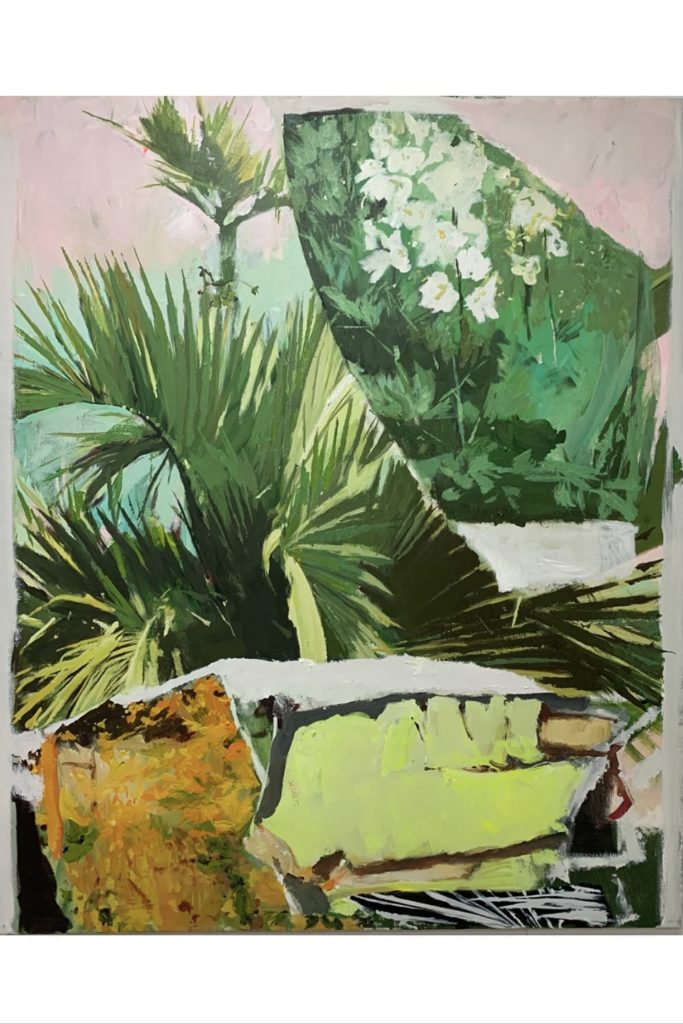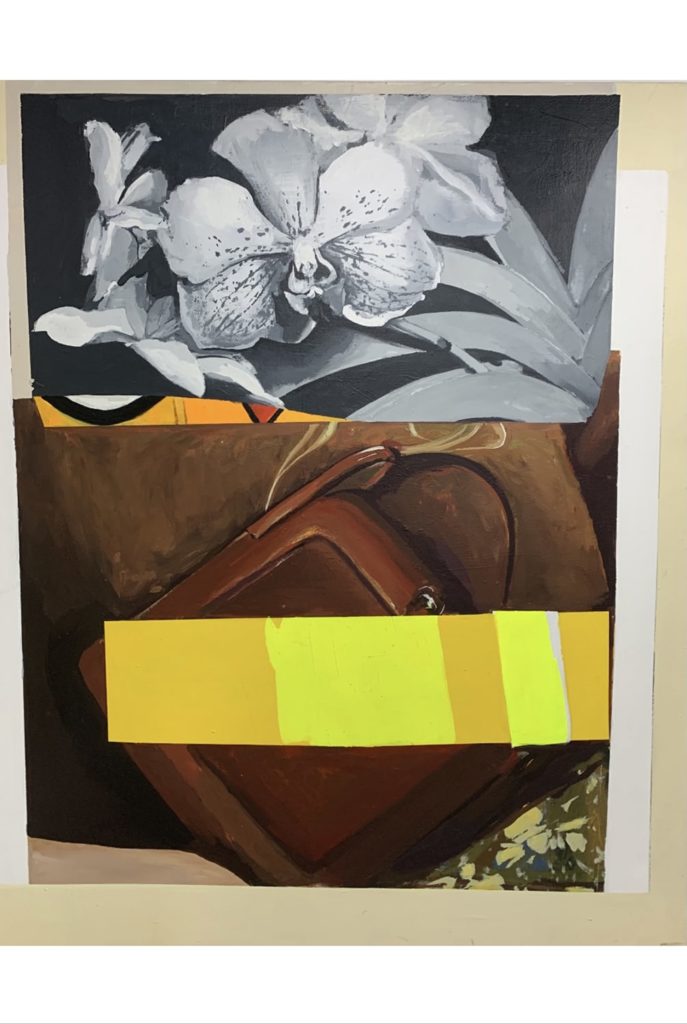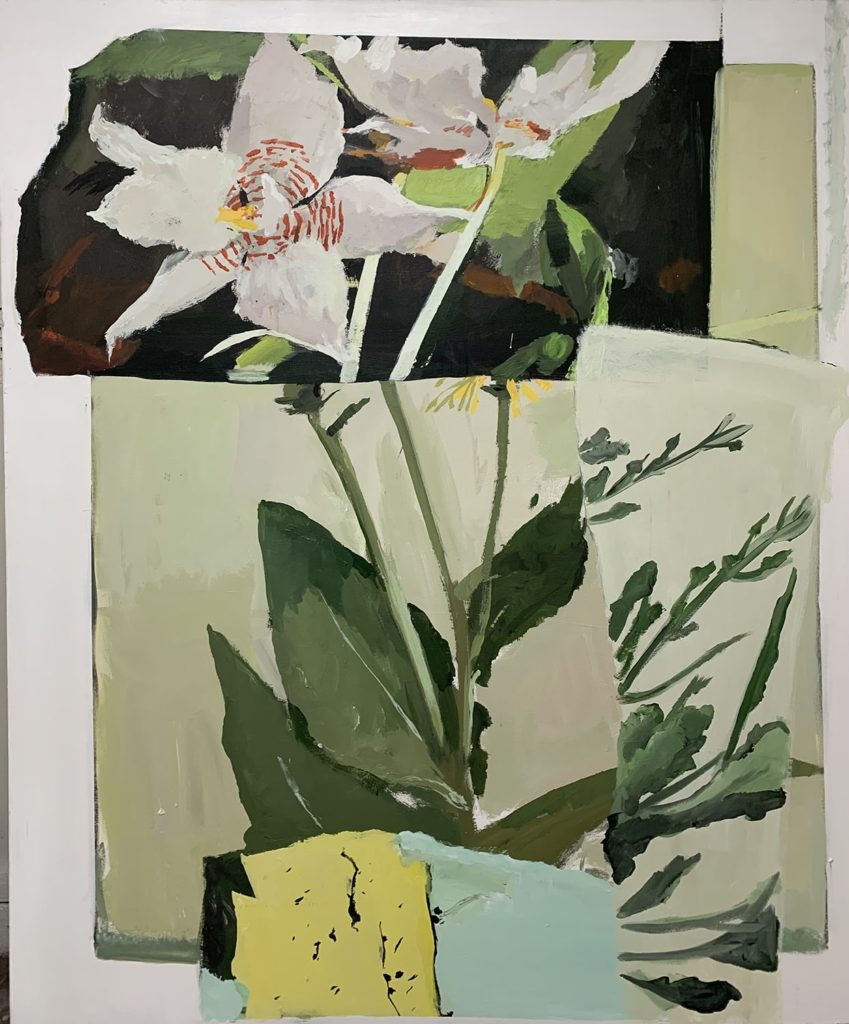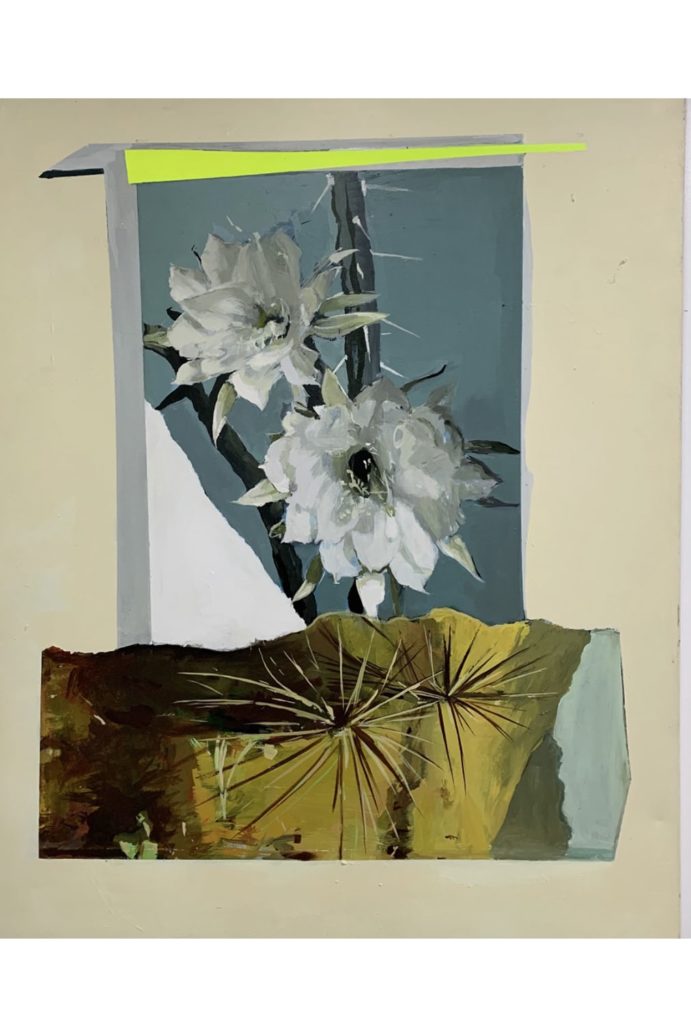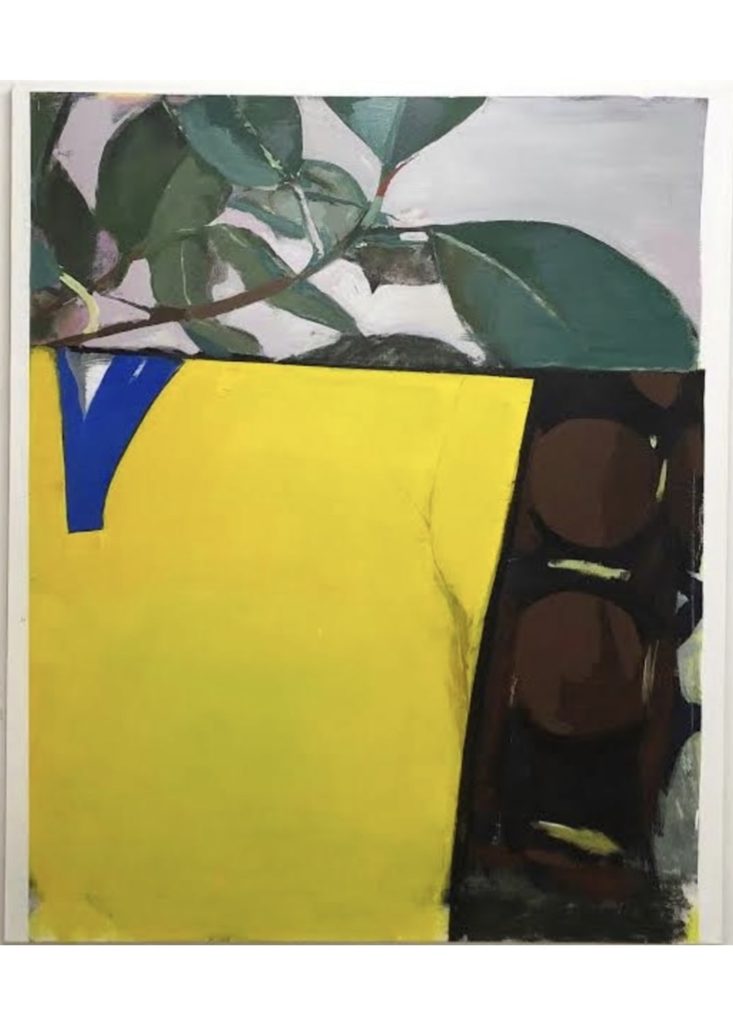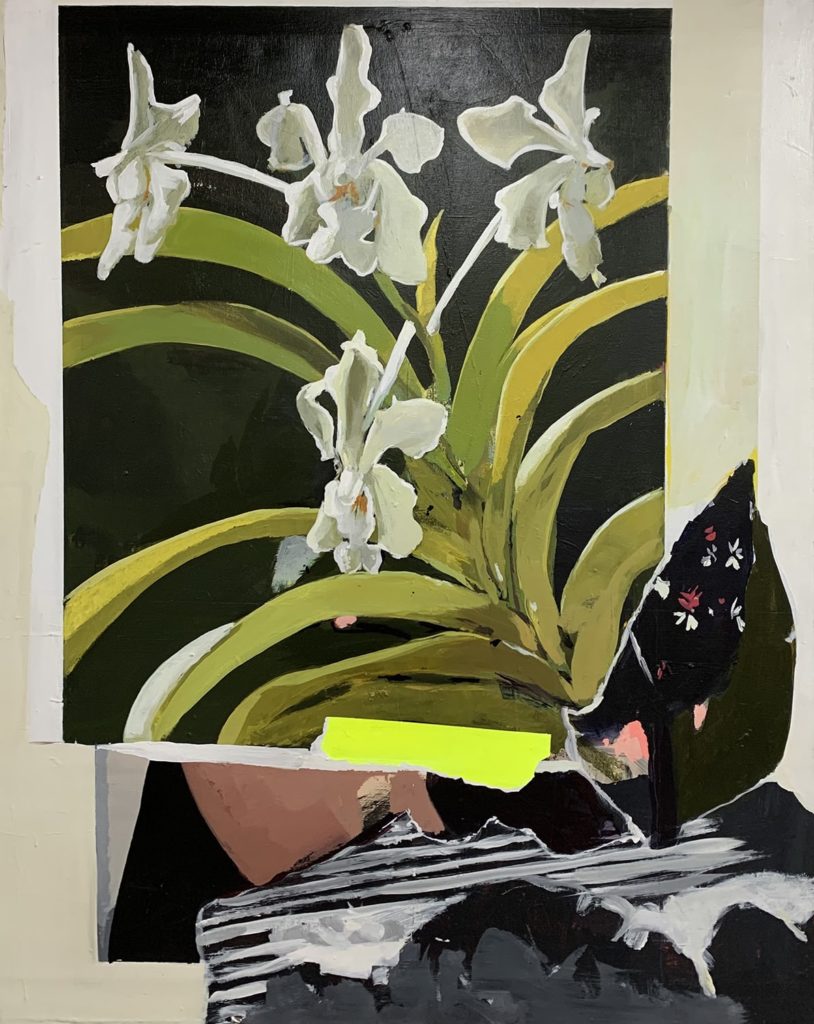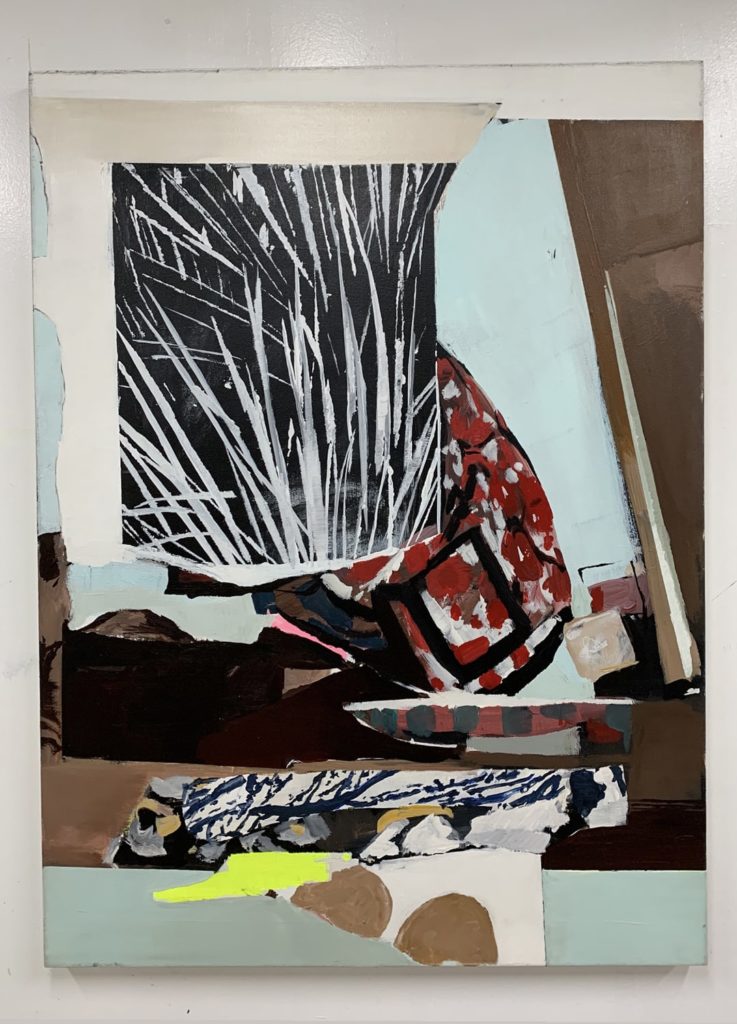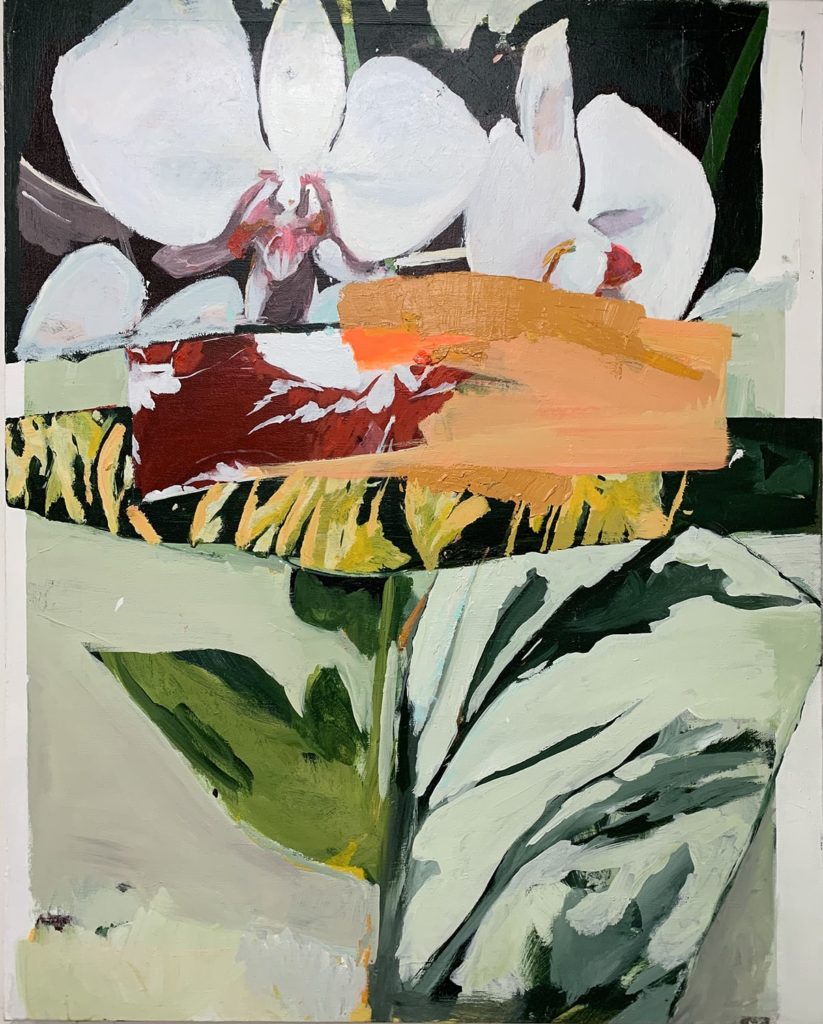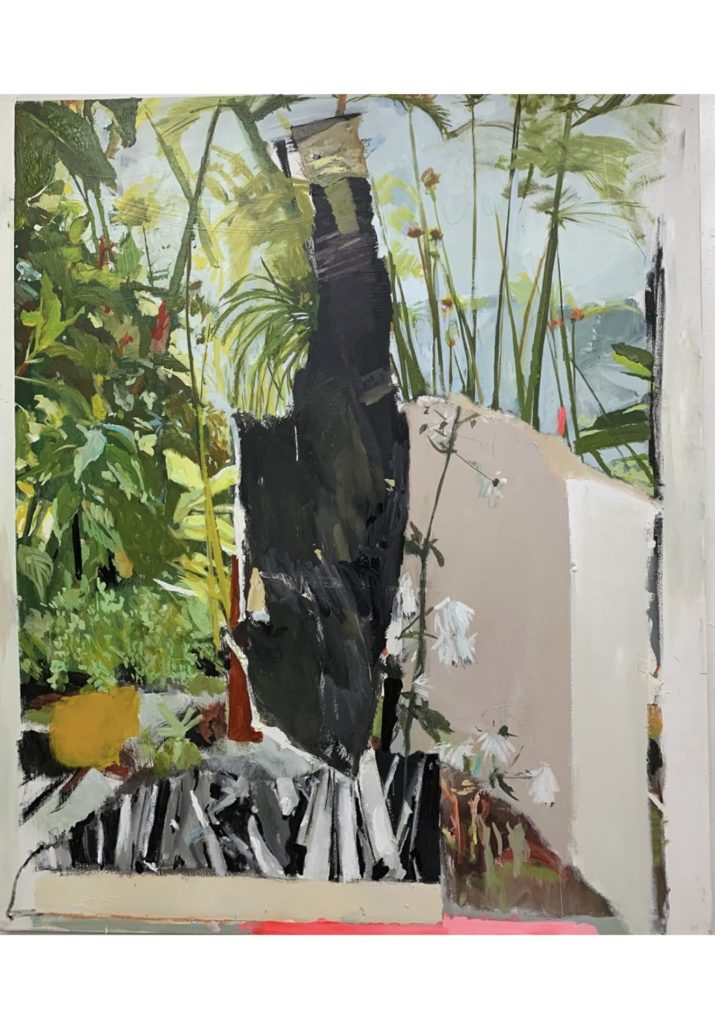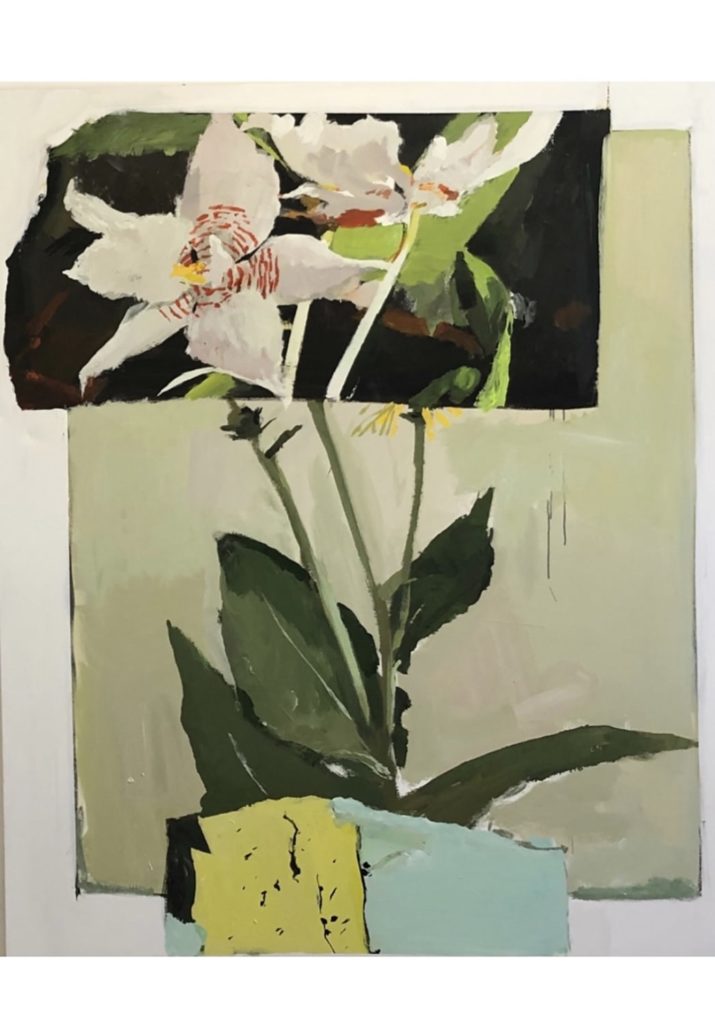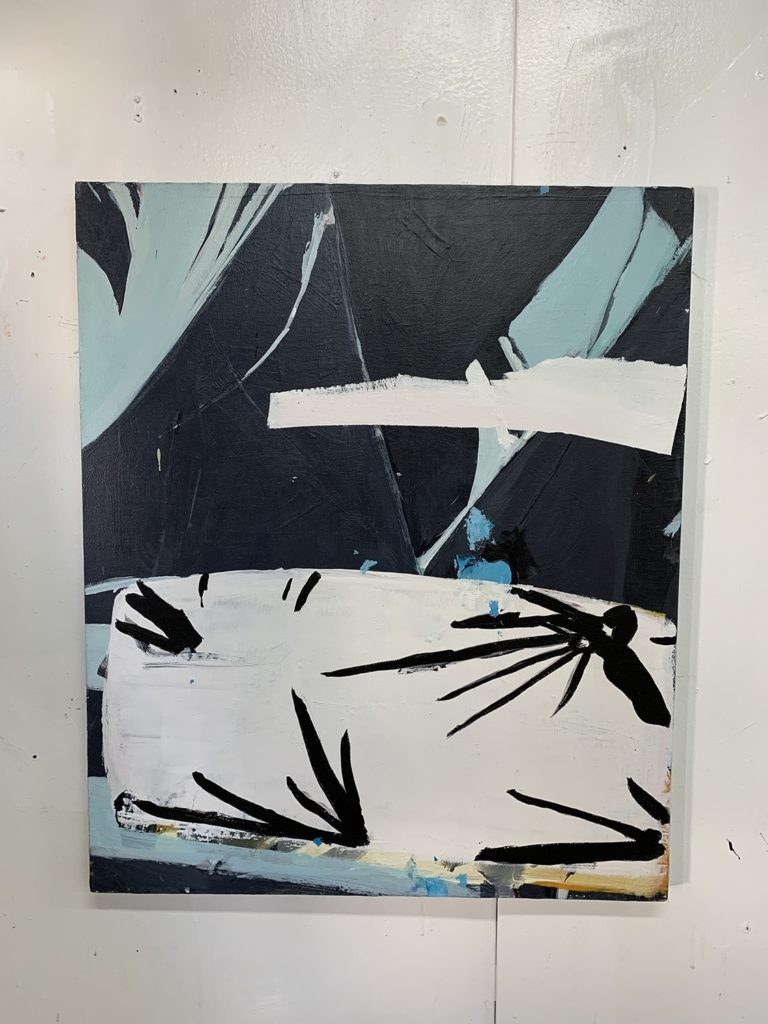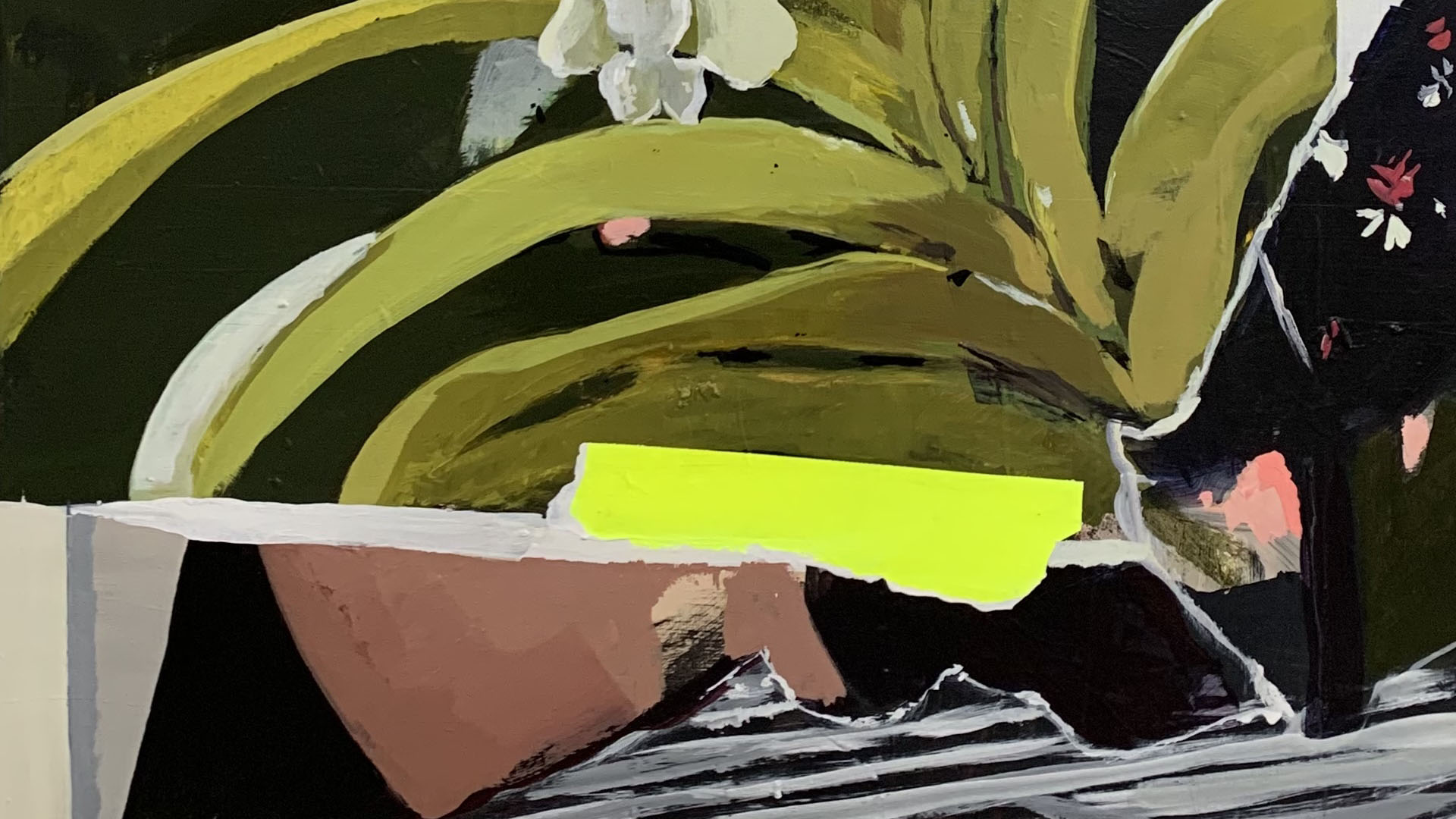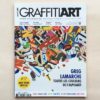TWS –Hi Michael, would you like to tell us something that you’d like our readers know about you?
MH –I am from Southern California and have been making pictures all my life. I started drawing cartoons as a child, then in my late teens I was fascinated by graffiti, and I got involved a bit there. In my early 20s I attended a traditional art school and learned to draw and paint the model with extreme accuracy. Lately I have been trying to merge everything I am interested in into a single image.
TWS – Do you remember the first artwork that struck you and made you realise there was something in painting that attracted you especially?
MH –I can’t remember a particular piece that struck me but I can recall various trips to Europe where I was fascinated by the Sistine Chapel and various works from museums. I am constantly changing my interests but I find everything regarding painting as something to investigate and hopefully keep me stimulated in the art form. I am interested in everything from Jean Baptiste Corot to John Singer Sargent, to the contemporary Colombian painter Oscar Murillo .
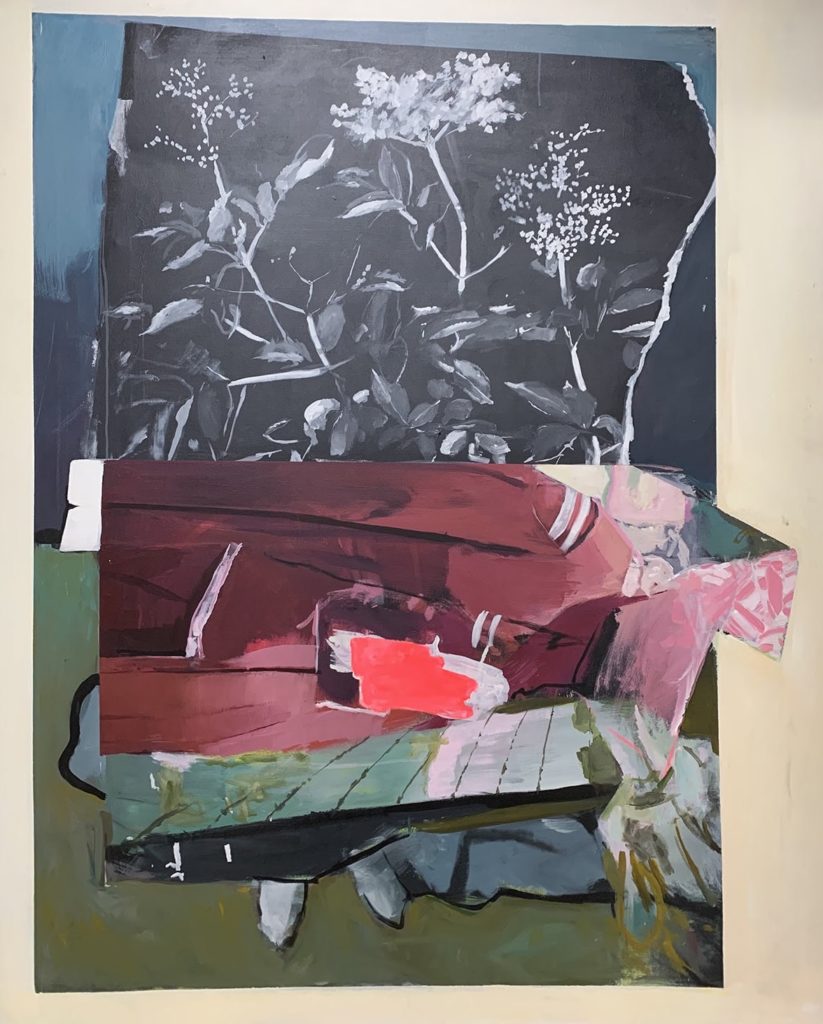
TWS –Which were the artists that early in your life made you want you to be an artist?
MH –I definitely was inspired by graffiti. Graffiti artists were the first ones I saw having art shows in a gallery type space. I think this was a bridge between something I really enjoyed and something I knew was possible. When I went to school they introduced us to a semi gallery setting and from there I just continued making work and making some sales.
TWS –Why among all media, have you chosen to focus your formal education on painting?
MH –I still find painting to be a worthy media. I think the physically of a substance is interesting in a digital world. Also I love the physically of a gallery space and the relationship between art pieces. I also think art and painting specifically brings people with many ideas into a real setting and furthers human dialogue.
TWS – How plants and flowers became a central part of your artistic identity? What is in them that you feel so attracted to? What do you want to communicate through them?
MH –Plants, flowers and nature specifically ground me and I think ground a lot of people that are looking for something of balance. I think that nature is a sort of foundation which a lot of people lack in the 21st century. We are so detached from things traditionally common for thousands of years.We can be in front of a screen our whole lives and never know the name of a single plant. I think using digital information i.e. instagram and reintroducing plants into a person’s consciousness is good .
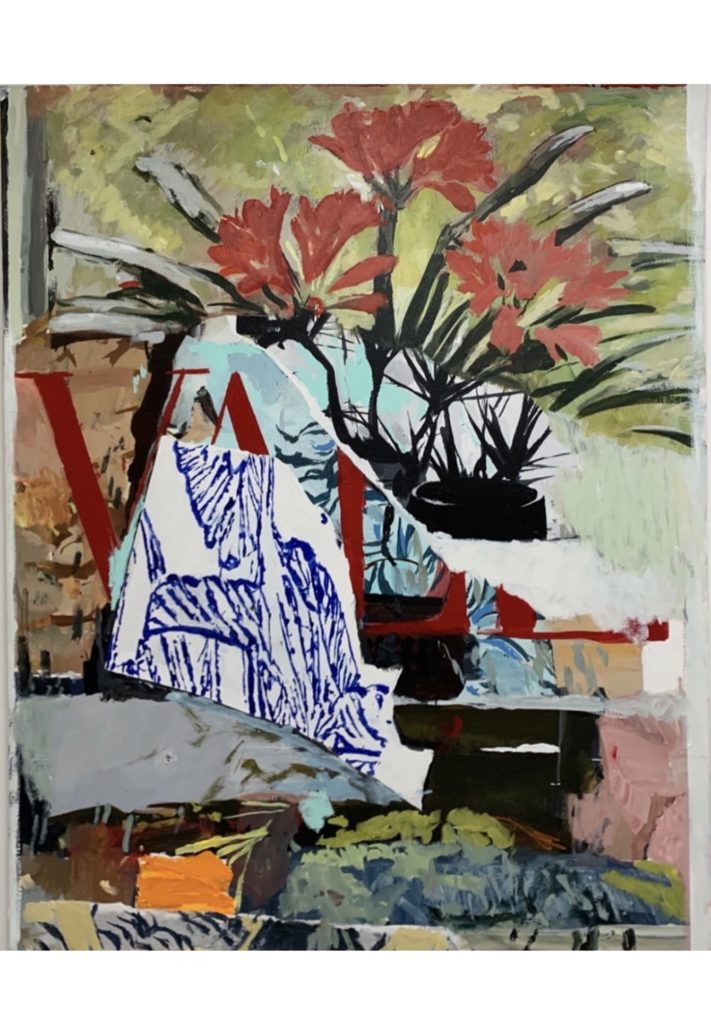
TWS –How collage entered in your practice? And which was the path that led you to mix both mediums in order to create your painted collages?
MH– I started making collages with paper as a way of making images when I was not able to get into the studio when I had my first son. I had hundreds of these images and so I decided to start making trompe l’oile paintings of the collages on a large scale. It is fun to try to emulate the tears and haphazard shapes in a way which creates interesting intersections. I like being able to paint things that are abstracted directly next to thing which are more rendered out. Collage allows for this to happen. Also collage is closely related to the way we view life. We are bouncing around from real life to instagram screens to online photos. The whole thing can be a bit disorienting, but I guess it is the current state of things.
TWS –Why do you feel you need to translate the language of collage into paint? How does the initial collage mutates when this translation happens? What’s gained and what’s lost in this action?
MH –I think collages can make the image immediately feel new. It takes the image to a specific present moment. I also like how I have to ability to remove things and add new things as I see fit throughout the painting process. I think you can do this if you are inventing an image out of your head, but for me it is nice to have some solid information to use as a reference. The images are constantly changing until the painting is out of my studio. I will continue to mess with it if it hangs around for too long. I like this idea of never knowing when the thing is complete. I may lose something I thought was working but I love risk and I love rish with in the paint and image as a whole.
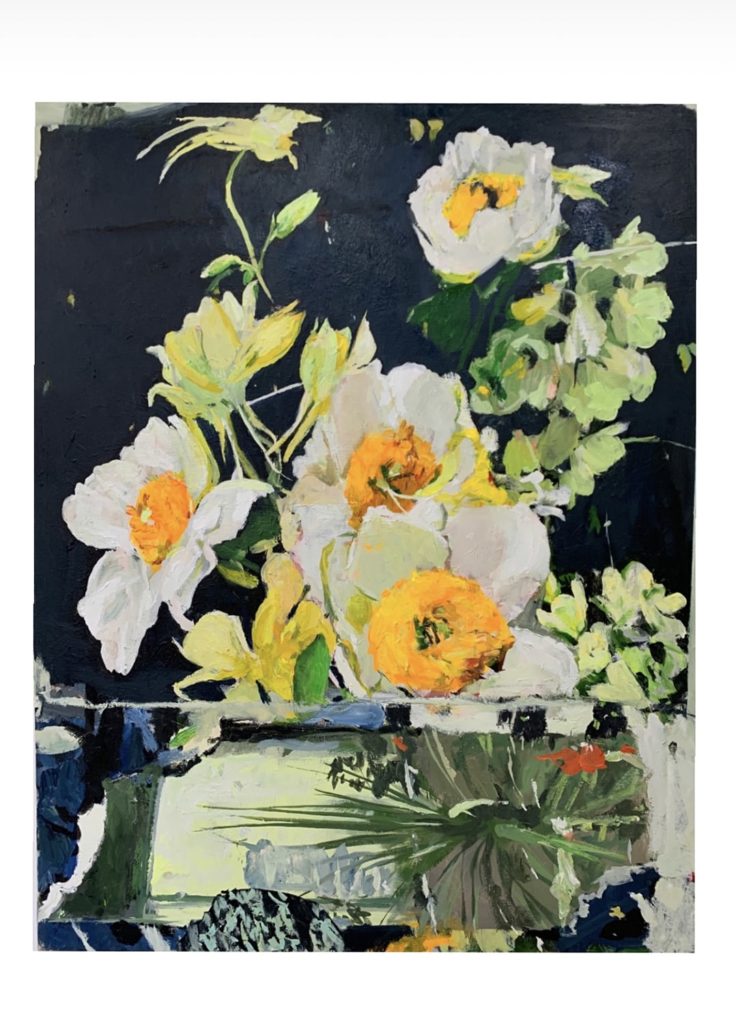
TWS –While in your figurative works there’s an idea of natural beauty and perfection, the pieces that are based on collage are moved by deconstruction and imperfection, showing a darker worldview. Can you tell us more about how and why your work moves between these two approaches?
MH –I think beauty balances and tempers the tension that exists. I think these paintings stand as a metaphor for that, and a beacon of hope. I don’t want the image to be overly leaning one way or the other in terms of positive or negative. I want them to mirror conditions that exist. I think human life is about problem solving and developing a love for the task. Running or hiding only seems to make things boring or safe. I think deconstruction brings about reconstruction and hopefully in a better way.
TWS –Which is your own definition of collage?
MH –Collage for me in the fracturing of an image and a re arrangement of these bits back into a single image.
Find more about Michael Harnish on Instagram
